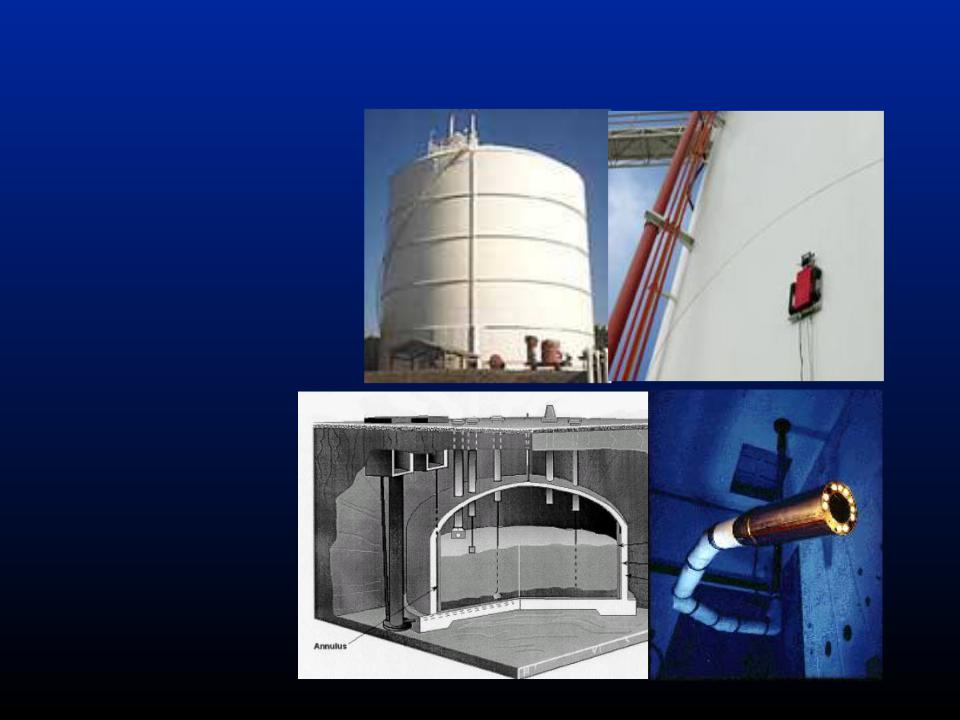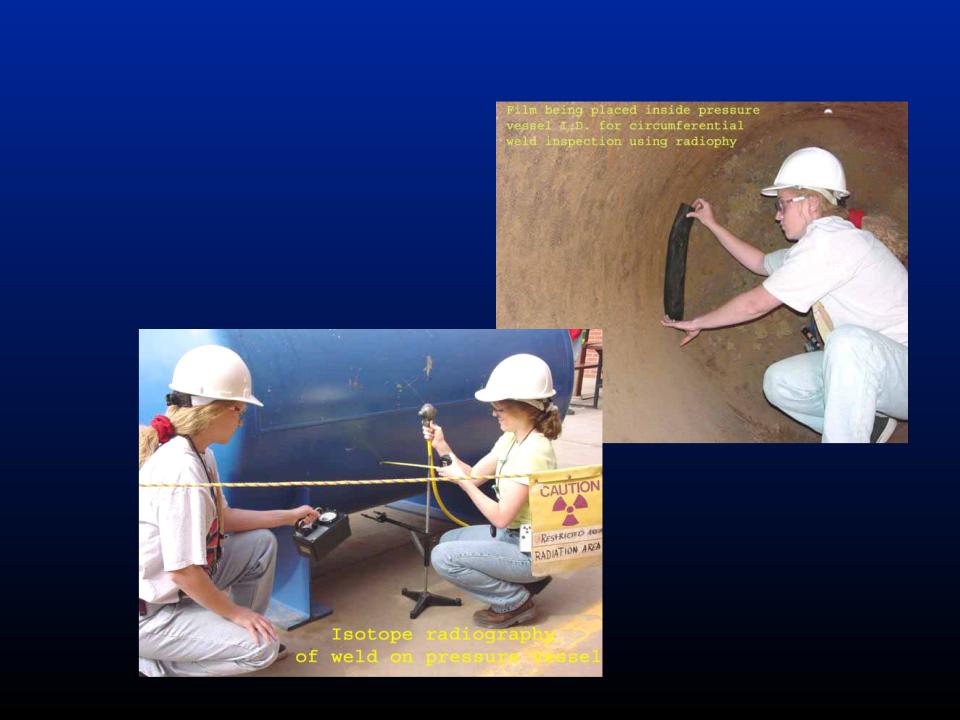
- •Introduction to Nondestructive Testing
- •Outline
- •Definition of NDT
- •Methods of NDT
- •What are Some Uses of NDE Methods?
- •When are NDE Methods Used?
- •Six Most Common NDT
- •Visual Inspection
- •Liquid Penetrant Inspection
- •Magnetic Particle Inspection
- •Magnetic Particle Crack Indications
- •Radiography
- •Film Radiography
- •Radiographic Images
- •Eddy Current Testing
- •Eddy Current Testing
- •Ultrasonic Inspection (Pulse-Echo)
- •Ultrasonic Imaging
- •Common Application of NDT
- •Inspection of Raw Products
- •Inspection Following
- •Inspection For
- •Power Plant Inspection
- •Wire Rope Inspection
- •Storage Tank Inspection
- •Aircraft Inspection
- •Jet Engine Inspection
- •Crash of United Flight 232
- •Pressure Vessel Inspection
- •Rail Inspection
- •Bridge Inspection
- •Pipeline Inspection
- •Special Measurements
- •For More Information on NDT

Inspection Following
Secondary Processing
•Machining
•Welding
•Grinding
•Heat treating
•Plating
•etc.

Inspection For
In-Service Damage
•Cracking
•Corrosion
•Erosion/Wear
•Heat Damage
•etc.

Power Plant Inspection
Periodically, power plants are shutdown for inspection. Inspectors feed eddy current probes into heat exchanger tubes to check for corrosion damage.
Pipe with damage |
Probe |
Signals produced by various amounts of corrosion thinning.

Wire Rope Inspection
Electromagnetic devices and visual inspections are used to find broken wires and other damage to the wire rope that is used in chairlifts, cranes and other lifting devices.

Storage Tank Inspection
Robotic crawlers use ultrasound to inspect the walls of large above ground tanks for signs of thinning due to corrosion.
Cameras on long articulating arms are used to inspect underground storage tanks for damage.

Aircraft Inspection
•Nondestructive testing is used extensively during the manufacturing of aircraft.
•NDT is also used to find cracks and corrosion damage during operation of the aircraft.
•A fatigue crack that started at the site of a lightning strike is shown below.

Jet Engine Inspection
•Aircraft engines are overhauled after being in service for a period of time.
•They are completely disassembled, cleaned, inspected and then reassembled.
•Fluorescent penetrant inspection is used to check many of the parts for cracking.

Crash of United Flight 232
Sioux City, Iowa, July 19, 1989
A defect that went undetected in an engine disk was responsible for the crash of United Flight 232.

Pressure Vessel Inspection
The failure of a pressure vessel can result in the rapid release of a large amount of energy. To protect against this dangerous event, the tanks are inspected using radiography and ultrasonic testing.

Rail Inspection
Special cars are used to inspect thousands of miles of rail to find cracks that could lead to a derailment.
